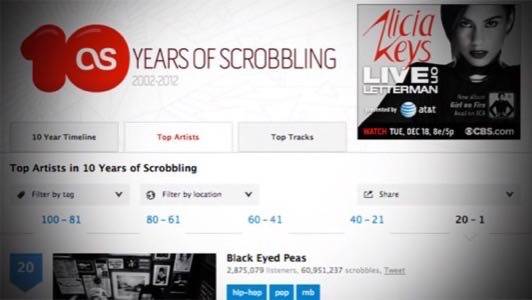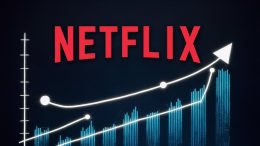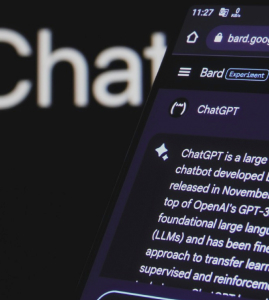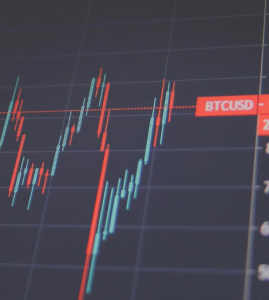
The Swedish sure do love them some Coldplay. The Japanese? They’re more into The Beatles and Radiohead, but not quite as much as they adore Utada Hikaru, a 30-year-old J-pop singer based in the U.S.
These musical insights and many, many more can be gleaned from a massive, interactive data set published by Last.fm, the Internet radio and recommendation service. Its user base might not be a representative sample, but the numbers are still fascinating. Last.fm has also put together an interactive timeline breaking down music milestones and trends tied to its own music playback data. Rick Astley saw a big spike in listens in 2008, for instance, when “rickrolling” was at its peak.
Last.fm has now been tracking everything its users listen to for a decade. Its “scrobbling” technology has been watching us hit the Play button since the iPod was a chunky white brick with a big click wheel. Today, it’s baked into Spotify, a Chrome add-on and a host of digital music platforms and apps.
The Value of Last.fm’s Aggregate Listening Data
The service may not get the attention it once did, but Last.fm holds a uniquely significant, if underrated asset: Big Data. By embedding itself on desktops, mobile devices and within music services, Last.fm has an unparalleled, platform-agnostic view of what people are listening to. As a user, I can see which artists, empirically speaking, I listen to the most. Which songs I played excessively six months ago.
Last.fm, of course, uses this data to recommend new music to me, which it actually does quite well. But there’s also huge value in the aggregate data it collects.
What good are traditional music sales charts when people download torrents, stream albums on Rdio and check out new bands on YouTube? Not much actually.
But if we permit it, Last.fm can watch all of that activity, compiling rich and detailed data about what we listen to, both as individuals and as a group. That aggregate data could be a goldmine of insights for radio DJs and other tastemakers, argues radio futurologist James Cridland. He’s right.
I hope Last.fm keeps spreading its API far and wide, and that more people opt to use the service, even if it does lack the buzz of Spotify or the headline-grabbing power of Pandora. The company should push hard to forge partnerships with music apps, hardware manufacturers and mobile platforms to keep collecting all that data.
The insight we stand to gain would be pretty incredible.

















